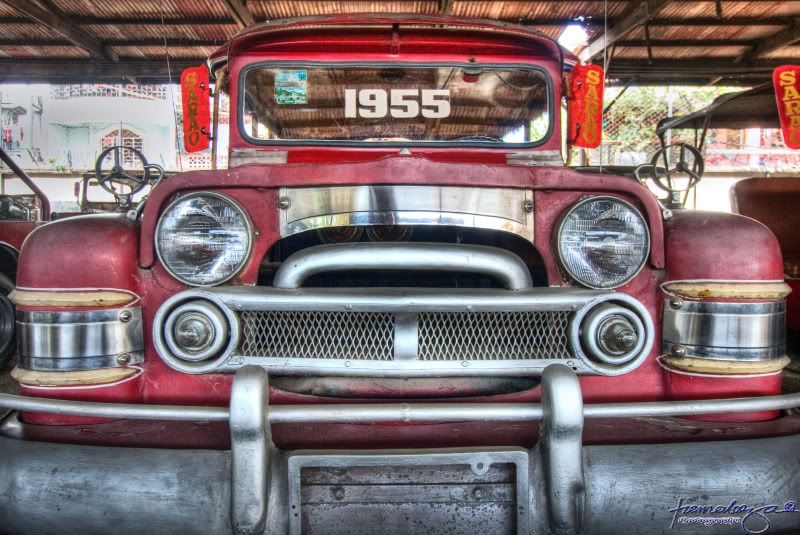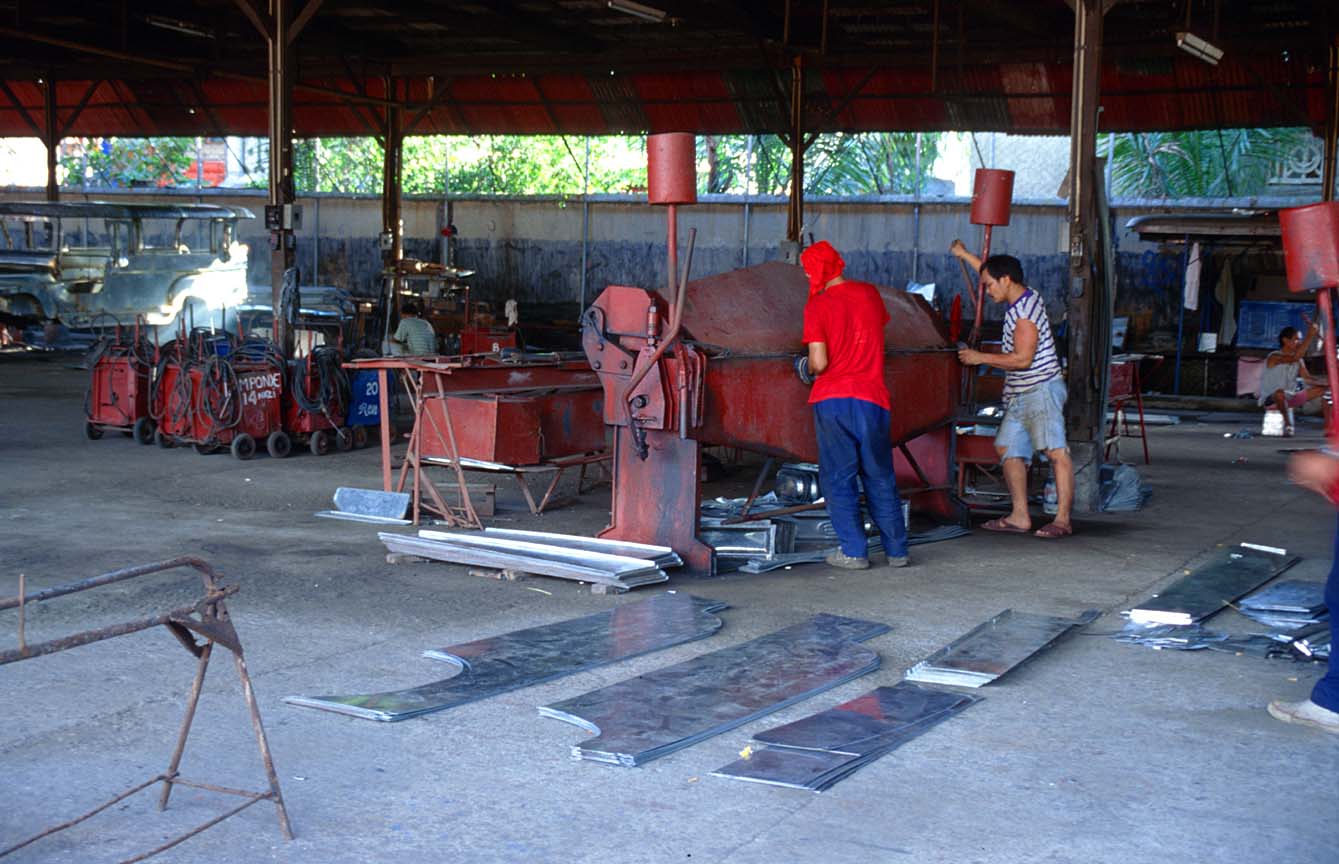Who is Leonardo sarao?
Who is Leonardo sarao?

1955 Sarao Motor
In his early youth, Sarao worked as a calesa driver, or cochero, before finding employment in an automotive bodybuilding and repair shop. In 1953, at age 32, he acquired enough know-how strike out on his own with P700.00 borrowed from a brother. Two years later, he assembled his first jeepney with the help of brothers Rafael, Eduardo, and Ernesto, who have since joined him as business partners. By 1958 they were mass-producing the Sarao jeepney. In less than 15 years, their jeepneys had out numbered all others on the road nearly 7 to 1. Theirs were chosen for exhibition at the New York World's Fair. When Jeepney King Leon Espelita went on a goodwill tour of Japan as part of his prize, he drove a yellow Sarao. The trademark today has become so popular that Sarao is Jeepney! Wherever exhibited abroad, Sarao's draw predictable reactions: grasps, giggles, the raising of conservative eyebrows, monosyllabic superlatives, and the kind of smile one usually sees in carnivals and parades.
No wonder Leonardo Sarao speaks about his jeepneys with pride-"as if they were his children", according to a spokesman at his plant. A stocky family man with simple tastes in food and clothes, he projects the robust confidence of a born winner, not only because he has always enjoyed the loyalty of his brothers, his other business associates, and some 300 employees, but also because he has never really cut off ties with his simple rural background. His exuberance matches that of his finished products at his plant, especially when he talks about the units he has exported to the U.S., Germany, Japan and Malaysia; about the tourist who have made his plant a regular stopover (he runs a souvenir shop right in the premises, but oddly no mini-jeepney models are for sale); about the time he dispatched his jeepneys to the 1974 Miss Universe Beauty motorcade; about the 1975 visit of Italian movie-actress-turned-photographer Gina Lollobrigida to take photos of jeepneys at his plant for her two coffee-table books in the Philippines.
The success story is not all smooth cruising. Some years ago, order of jeepneys suffered a sharp decline caused by another one of those jeepney-ban scares in Manila. Alarmed operators even considered selling their units at a loss. When the suggestion arose to lay off some shop workers, the paternalistic Sarao rejected it. He is quoted as saying, "They also need their money badly." Is he not daunted by the possibility of jeepneys to be faced out to give way to the reportedly more efficient Greyhound-type buses? He had a quietly knowing smile ready for asking that, as he started to rummage his office desk - a disarray of papers, wads of folded one hundred peso bills, knick knacks - for clipping abroad had sent him. "We want to show unused item about a suggestion made by an English man to his countrymen…" but the clipping could not be found. This English man's point, he said, was that London's traffic problem could be licked if the traffic authorities adapted a Philippine solution: jeepneys. In Metro Manila, at any rate, Sarao believes that the smaller, nibbler runabout is a better solution to the traffic headache than super buses, not the other way around. Given the generally narrow streets of Metro Manila, one is likely to agree. Economists, E.F. Schumacher's "small is beautiful" philosophy for developing nations could not have found a stauncher ally at Pulang Lupa, Las Piñas
No wonder Leonardo Sarao speaks about his jeepneys with pride-"as if they were his children", according to a spokesman at his plant. A stocky family man with simple tastes in food and clothes, he projects the robust confidence of a born winner, not only because he has always enjoyed the loyalty of his brothers, his other business associates, and some 300 employees, but also because he has never really cut off ties with his simple rural background. His exuberance matches that of his finished products at his plant, especially when he talks about the units he has exported to the U.S., Germany, Japan and Malaysia; about the tourist who have made his plant a regular stopover (he runs a souvenir shop right in the premises, but oddly no mini-jeepney models are for sale); about the time he dispatched his jeepneys to the 1974 Miss Universe Beauty motorcade; about the 1975 visit of Italian movie-actress-turned-photographer Gina Lollobrigida to take photos of jeepneys at his plant for her two coffee-table books in the Philippines.
The success story is not all smooth cruising. Some years ago, order of jeepneys suffered a sharp decline caused by another one of those jeepney-ban scares in Manila. Alarmed operators even considered selling their units at a loss. When the suggestion arose to lay off some shop workers, the paternalistic Sarao rejected it. He is quoted as saying, "They also need their money badly." Is he not daunted by the possibility of jeepneys to be faced out to give way to the reportedly more efficient Greyhound-type buses? He had a quietly knowing smile ready for asking that, as he started to rummage his office desk - a disarray of papers, wads of folded one hundred peso bills, knick knacks - for clipping abroad had sent him. "We want to show unused item about a suggestion made by an English man to his countrymen…" but the clipping could not be found. This English man's point, he said, was that London's traffic problem could be licked if the traffic authorities adapted a Philippine solution: jeepneys. In Metro Manila, at any rate, Sarao believes that the smaller, nibbler runabout is a better solution to the traffic headache than super buses, not the other way around. Given the generally narrow streets of Metro Manila, one is likely to agree. Economists, E.F. Schumacher's "small is beautiful" philosophy for developing nations could not have found a stauncher ally at Pulang Lupa, Las Piñas
Sarao Jeepney Manufacturing in PULANG LUPA, LAS PINAS CITY



0 Mga Komento:
Mag-post ng isang Komento
Mag-subscribe sa I-post ang Mga Komento [Atom]
<< Home